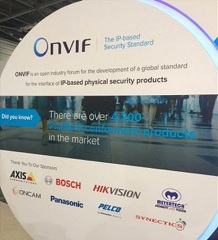
ONVIF has launched the organisation’s new online open source development platform, Github, designed to help drive the development of ONVIF network interface specifications.
“By having a repository on Github, ONVIF is making its interface specification development process more accessible, transparent and efficient,” said Per Björkdahl, chairman of the ONVIF Steering Committee. “We encourage ONVIF members and the global developer community to go to our Github site and contribute to the standardisation work of supporting greater feature interoperability and innovation.”
ONVIF interoperability specifications are already publicly available as open standards and are implemented by more than 400 manufacturers of IP surveillance cameras, video management software and physical access control systems to enable communication between conformant devices and clients from different vendors. Opening the development of network interface specifications to the greater developer community will allow for input from other industries, such as IoT, artificial intelligence, cloud services and other technology domains.
The ONVIF Github site provides the source files of ONVIF specification-related documents, including schema files, which describe the XML framework of specific ONVIF features and functions. Developers with an active Github account may propose changes via so-called pull requests. A dual license scheme enables ONVIF to publish these extensions and enables further evolution by the open source community. Changes ultimately accepted by the ONVIF Technical Committee will be published on the ONVIF public website.
The Github platform enables greater automation and efficiency by automating key areas of the process. This includes removing the manual handling of change requests via a ticket system, and automatically merging accepted changes into a development branch, which eliminates the need for a dedicated editor to update the network interface specification files.
Over the course of its 11-year history, ONVIF has also developed several profiles (groupings of certain functionalities derived from established ONVIF network interface specifications) that enable the performance of a set of features: Profile S for streaming video; Profile G for video recording and storage; Profile C for physical access control; Profile Q for quick installation, Profile A for broader physical access control configuration and Profile T for advanced video streaming. While profile development is not open sourced, ONVIF widely expects that specification contributions realised via open source will support the development of future profiles.











